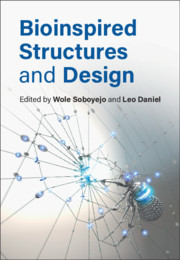Book contents
- Bioinspired Structures and Design
- Bioinspired Structures and Design
- Copyright page
- Contents
- Contributors
- Preface
- Part I Materials
- Part II Structures
- 5 Bioinspired Underwater Propulsors
- 6 Bioinspired Design of Dental Functionally Graded Multilayer Structures
- 7 Bionic Organs
- 8 Bioinspired Design for Energy Storage Devices
- 9 Bioinspired Design of Nanostructures
- Part III Natural Phenomena
- Index
- References
6 - Bioinspired Design of Dental Functionally Graded Multilayer Structures
from Part II - Structures
Published online by Cambridge University Press: 28 August 2020
- Bioinspired Structures and Design
- Bioinspired Structures and Design
- Copyright page
- Contents
- Contributors
- Preface
- Part I Materials
- Part II Structures
- 5 Bioinspired Underwater Propulsors
- 6 Bioinspired Design of Dental Functionally Graded Multilayer Structures
- 7 Bionic Organs
- 8 Bioinspired Design for Energy Storage Devices
- 9 Bioinspired Design of Nanostructures
- Part III Natural Phenomena
- Index
- References
Summary
Oral health is of great importance to people’s general health. Dental disease is more prevalent than most people imagine. For example, caries, which can lead to partial or total loss of teeth, affect almost 100% adults and 60–90% of schoolchildren [1]. To correct the dental malfunction caused by tooth loss due to various reasons, such as caries, aging, injury, etc, dental crowns have been adopted as a common treatment.
- Type
- Chapter
- Information
- Bioinspired Structures and Design , pp. 140 - 166Publisher: Cambridge University PressPrint publication year: 2020



